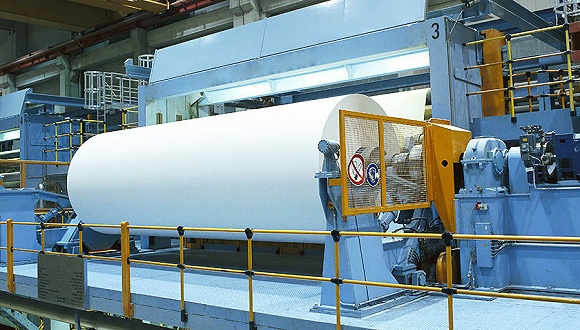1. Temperature
Biogas fermentation can be divided into three temperature ranges: 50~65℃ is called high temperature fermentation, 20~45℃ is called medium temperature fermentation, and below 20℃ is called low temperature fermentation. In addition, the fermentation method that changes with natural temperature is called normal temperature fermentation.
Biogas fermentation is affected by temperature and temperature fluctuations. Under the same temperature type conditions, since the metabolic activities of biogas fermentation microorganisms increase with the rise of temperature, within a certain temperature range, the higher the temperature, the faster the fermentation gas production rate; if the temperature fluctuation range is too large in a short period of time , May cause gas production to stop.
2. Acidity (PH value)
Generally, the suitable pH range of the methanogenic bacteria in the biogas digester of the paper mill biogas generator set is 6.5-7.8, and the change of the pH value will directly affect the survival and metabolism of the methanogenic bacteria. Under normal circumstances, the pH value of the biogas digester should be maintained between 6.8 and 7.5, which is appropriate around 7.2
When the pH value is below 5.5, the activity of methanogens is completely inhibited, and when the pH value rises to 8 or even 8.5, a certain gas production rate is still maintained. The pH value of acid producing bacteria ranges from 4.0 to 7.0. When it exceeds the suitable pH value range of methanogens, acid fermentation may exceed methane fermentation, causing “acidification” in the reactor.
The main factors affecting the change of pH value are as follows: one is the pH value of the fermentation raw materials; the other is that the feed concentration is too high when the anaerobic fermentation is started, the number of methanogens in the inoculum is insufficient, and the digester is in operation. Sudden increase of the load will cause the accumulation of volatile acid due to the imbalance of the rate of acid production and methane production, resulting in a drop in pH, which is often the main reason for the failure or termination of anaerobic fermentation.
3. Oxygen content
Part of the oxygen brought in during the start-up and feeding of the biogas fermentation of the biogas generator set in the paper mill is not harmful to the biogas fermentation and will not disrupt the normal progress of the biogas fermentation. This is because there are a part of aerobic bacteria and facultative bacteria in the biogas digester, the oxygen brought in will be quickly consumed by the aerobic bacteria or facultative bacteria in the non-methanogenic bacteria, so that the anaerobic environment is maintained in the pool, and this part Oxygen also keeps aerobic bacteria, facultative bacteria and anaerobic bacteria in a dynamic equilibrium relationship, but in order to maintain a good anaerobic environment, there must be no air leakage during the fermentation process.
4. Carbon to nitrogen ratio of biogas fermentation raw materials
The carbon-nitrogen ratio (C/N) of the fermentation raw materials refers to the ratio between the organic carbon content and the nitrogen content in the raw materials. A certain amount of nutrients such as carbon, nitrogen, and phosphorus required by biogas fermentation microorganisms can grow and carry out life activities normally. Carbon provides energy for microbial life activities and is an important substance for the formation of methane; nitrogen is also the main element that constitutes microbial cells. The ratio of these three nutrients, whether it is aerobic fermentation or biogas fermentation, the ratio of nitrogen to phosphorus is a definite value, 5:1. The ratio of carbon to nitrogen has a wider range. In the past, it was believed that the C/N of fermentation raw materials should be (13-30:1). If it is greater than 30:1, the effect is not good. If it is less than 13:1, it can still be fermented normally. However, in fact, biogas digesters using human feces as the main raw material (C/N=3.9:1) can also operate very well. Therefore, normal biogas fermentation requires a suitable carbon-nitrogen ratio, but it is not strict. Attention should be paid to the start-up of biogas digesters and the cultivation of suitable strains to improve the adaptability of biogas fermentation bacteria.
5. Biogas fermentation inoculum for biogas generator set in paper mill
The number and quality of biogas fermentation bacteria directly affect biogas fermentation, gas production rate and biogas quality. Whether the biogas fermentation can be started quickly is related to the high quality and large amount of inoculum.
If the inoculum at the start of biogas fermentation is not enough, the start-up may be slow. After a long time, the gas production rate is still low; the quality of the inoculum is poor, the number of methanogenic bacteria is small, and the activity is low. At this time, hydrolysis Sexual bacteria and hydrogen- and acid-producing bacteria multiply quickly, while methanogens multiply slowly, leading to faster non-methane production. The imbalance between the methane production and non-methane production processes may cause the slow accumulation of organic acids and the fermentation broth. The pH value drops and the biogas digester is acidified, resulting in slow gas production and low methane content and poor quality in the biogas.
Post time: Aug-18-2021

